Think tiger, think Sundarbans! The Sundarbans National Park is home to the world’s single largest concentration of tigers, and if these majestic creatures fascinate you, this is one national park that should be high up on your travel list.
Although spotting a tiger in its natural habitat is no easy feat, chances of spotting one in the Sundarbans is a possibility. During my visit, didn´t I see any.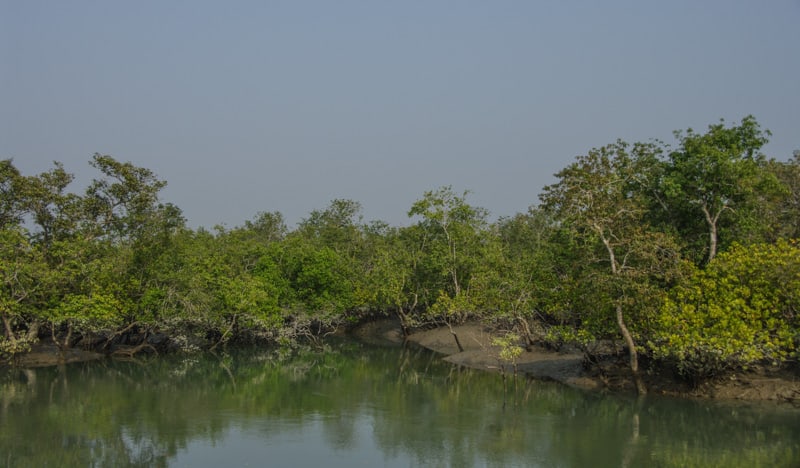
Sundarbans National is one of the three national parks I’ve visited in India to see wild tigers, the two other national parks being, Kaziranga National Park in the state of Assam and Ranthambore National Park in the state of Rajasthan. Another park which is highly recommended visit in India to see Tigers are the Pench National Park in the state of Madhya Pradesh
As the world’s largest mangrove forests, and also the most biologically productive natural ecosystem in the world, tigers abound in the area with the last count pegged at over 200 tigers!
10,000 square kilometres between two countries
Straddling the border of India and Bangladesh, Sundarbans National Park lies mostly within the state of West Bengal, while the area that falls within Bangladesh is referred to as the Sundarban Reserve Forest. The area, combined, is referred to as the Sundarbans and consists of a mighty delta that’s covered in mangrove forests, spanning more than 10,000 square kilometres.
Interestingly, the area earns its name from the ‘Sundari’ trees that are found in abundance in the area. What’s even more fascinating about this mighty mangrove is the intricate network of creeks and tributaries that make up the area, and which ensure that most of the Sundarbans are largely inhabitable by humans. And in spite of being located on the borders of two very populated countries, the forest is very remote, with very minimal human influence in the area.
And not just the Royal Bengal Tigers….
The mangrove forest is home to a bevvy of animals and birds, including cheeky macaques, fishing cats, wild boar, rhinoceros, jungle cats, flying fox, barking and spotted deer, Chital deer and lots of saltwater crocodiles. The peskiest of the lot has got to be the macaques and the crocodiles, and if ever you need to have your wits about you in the Sundarbans, it will have to be because of these two animals.
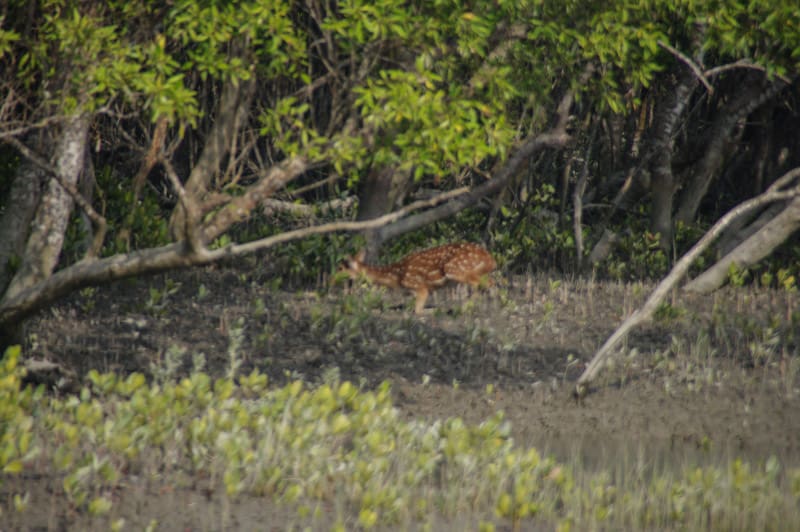
Chital deer in Sundarbans, perfect tiger food
Bird watchers, you’ll love the Sundarbans! Don’t forget your binoculars – the swampy mangroves are home to a variety of gorgeous birds; openbill storks, black-capped kingfishers, Pheasant-tailed jacanas, back-headed ibis, coots, marsh harriers, red jungle fowl, grey herons, cormorants, and woodpeckers are some of the birds you’ll get to spot when you’re scouring over the waterways trying to spot that elusive tiger.
Now back to the tigers….
The primary focus of the Sundarbans National Park has always been the Royal Bengal Tiger. It’s believed that over 80% of the tigers in the region are considered man-eaters who look at humans as a form of prey. Hang on now – don’t let this change your mind about visiting. Numerous small villages surround the Sundarbans National Park, and the local villagers often venture into the forest to collect timber and honey.
These trips often turn into death traps. The risk is high, but one that has to be taken. Known as honey –hunters, the villagers travel through the forest collecting liquid gold.
When travelling in groups, chances of a tiger attack are slim, but when a villager gets separated from the group and moves around on his own, the chance of being dragged away and killed for prey is high. Tigers have also been known to stray out of the national park and into nearby villages in search of food.
While the Sundarbans National Park makes up the core zone with the highest concentration of tigers, the buffer zone is made up of the Sajnekhali Wildlife Sanctuary. The area that tourists get to visit is the well-defined Eco-tourism zone where the incidence of any fatalities is extremely rare.
To make the most of your experience in the Sundarban, spend at least three to four full days here. Although overnight trips are offered, that’s barely enough to soak in the majestic mangroves, and hardly ever enough to spot even a paw print of a tiger. Numerous travel companies offer well-organized trips from Kolkata, the closest metropolitan city to the Sundarbans on the Indian side of the border.
It’s best to let a travel company take care of your trip – from bookings to travel, forest permits, and accommodation – everything is taken care of. All you need to do is pay up and show up. A three-hour road trip from Kolkata brings you to a place called Godkhali from where you board a boat, marking the beginning of your journey through the Sundarbans.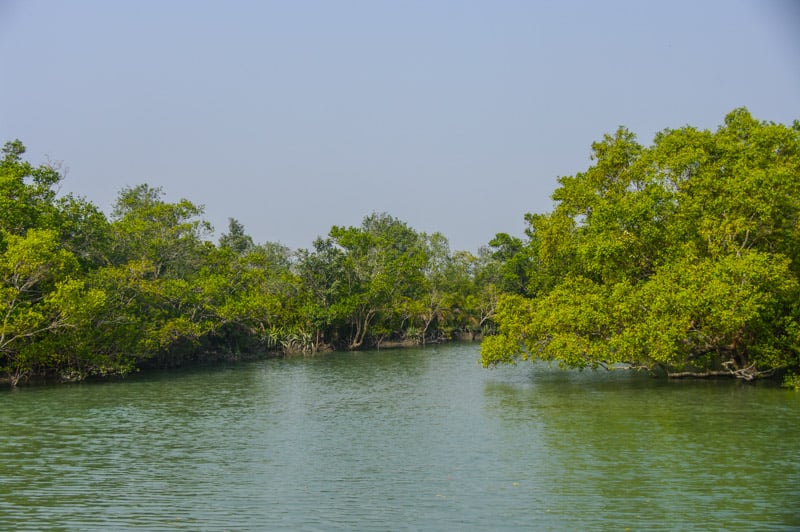
If you’d like the option of staying on the water, houseboats are available, or else, there are several safari lodges in the area catering to visitors. I would always prefer a stay at one of the lodges!
What you should expect…
On a trip to the Sundarbans is practising the art of patience. If you’ve ever been on a wildlife safari before, you’ll know how excruciatingly painful it can be to spot that elusive animal you’ve travelled´ all the way to see, and the Sundarbans is no different.
But chin up, there is lots more to see, and while catching a glimpse of a Royal Bengal Tiger in the wild is the dream, don’t miss out on hordes of other animals that you can spot in their natural habitat. Also, keep in mind that several smaller wildlife sanctuaries exist within the Sundarbans National Park.
Remember in Sundarban National Park…
There are no conventional jeep safaris. Here, you’ll be coursing the waterways for the larger part of your trip. Boat safaris are the only safaris conducted in this area, while some of the islands permit visitors to explore areas by foot (subject to permits and local forest permission).
The best chances of spotting a tiger are along the banks of the waterways, so its best to keep your eyes peeled on the banks at all times.

In Sundarbans National park will you travel around in small boats.
Very often tiger pugmarks can be observed, and are easily spotted thanks to the muddy, swampy nature of the surroundings. Again, tigers are masters of disguise, and the swamps often pose great difficulty in spotting tigers.
Tree roots and dense vegetation often render it next to impossible to spot wildlife, but with a pair of binoculars and fixed eyes trained on the swamp banks, you might strike gold with a view of these majestic creatures. And when you tire of looking at swamps, keep a lookout for river dolphins that abound in the rivers you’ll be sailing on.

Indian river Dolphins in Sundarbans
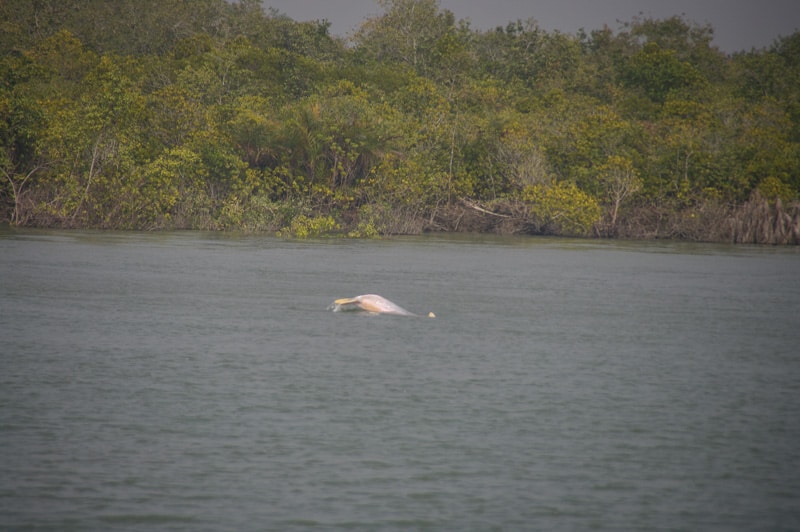
Pink River Dolphin in Sundarbans
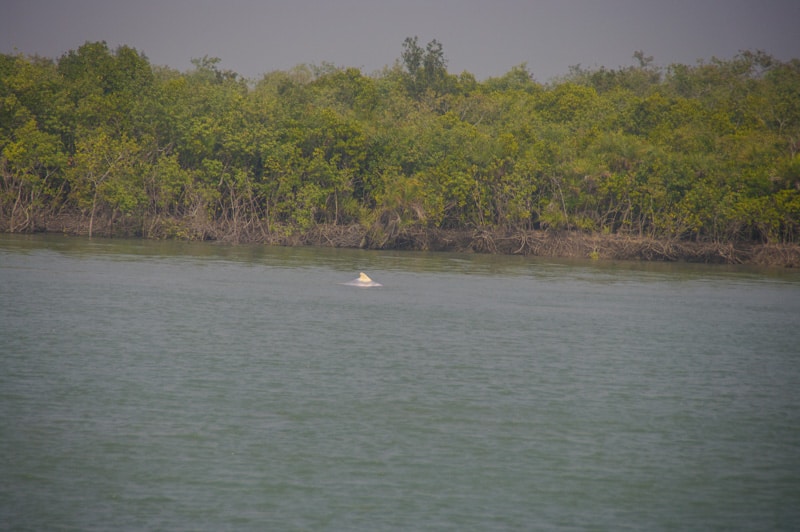
Popular spots on your visit will include…
A stop at the Sajnekhali watchtower; the watchtower is one of the best spots to view animals in the wild. With two watering holes nearby, animals often come here towards the early evening to get their fill of water. On the island is also located the bird sanctuary, a mangrove interpretation centre and a temple dedicated to the local goddess Bonbibi, revered by the locals as their protector against the feared tigers.
The Sudhanyakhali watchtower has a terrific location in the midst of the tiger reserve zone. This watchtower too sits close to a water body that is frequented by animals.
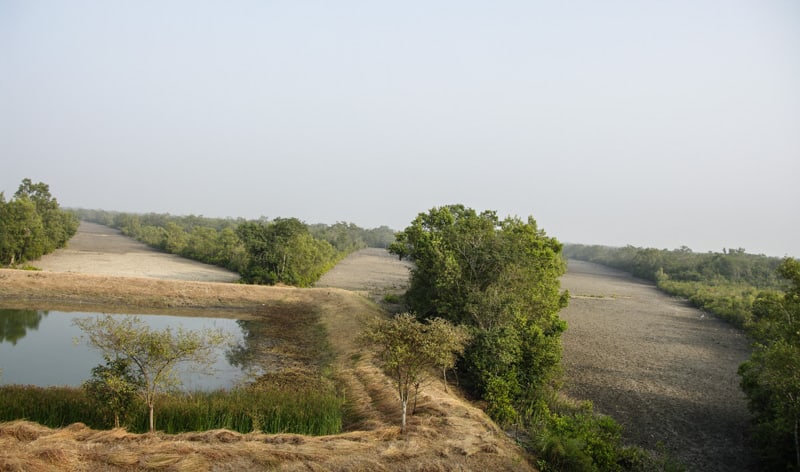
Water hole in front of one of the watchtowers
The Burirdabri watchtower is an interesting visit; it takes a mud walk followed by a mangrove cage trail to get to the tower. On the way, you’ll get to spot an abundance of crabs, snails, and mollusks. The highlight of this watchtower is the view of the Sundarbans on the Bangladesh side of the border.
Check out the Bhagbatpur Crocodile Project in the Bhagbatpur area of the Sundarbans. Known as the hatchery of the world’s largest estuarine crocodile, it makes for an interesting visit.
Other popular islands in the area are Netidhopani, Kalash, and Henry Islands. If you happen to be visiting during the winter months, you’ll get to see thousands of Olive Ridley turtles who make their way to Kalash Island for nesting. The island is great for bird watching too.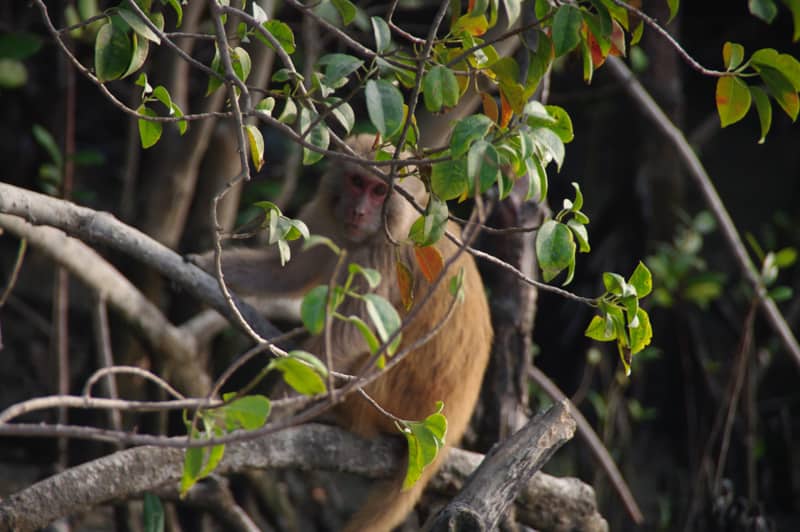
Getting to Sundarbans National Park.
Is a breeze. The Sundarbans National Park is well connected to Kolkata, the largest major city that’s located about three hours away. The easiest way is to travel by road from Kolkata to Godkhali from where you board your ferry for the onward journey. Other options include a train from Sealdah Railway Station in Kolkata to Canning Station – a two-hour-long train journey. From Canning, you can hop on a local shared van that will take you to Godkhali.
Kolkata is well connected to all other parts of the country by air and train.
Remember…
There is a lot more to the Sundarbans National Park than viewing the Royal Bengal Tiger. If you do get to spot one, consider yourself very, very lucky. But keep your eyes and ears open to a myriad of other sights and sounds that make this forest one of the most unique wildlife areas in the world. The usual safe practices of a safari are applicable here too, and it always helps to be well prepared!
Like it? Share it! Pin it!

Travel Guide to Sundarbans National Park home to the world´s largest Mangroove forest, diver dolphins and the Royal Bengal Tiger. In east India on the border with Bangladesh.
